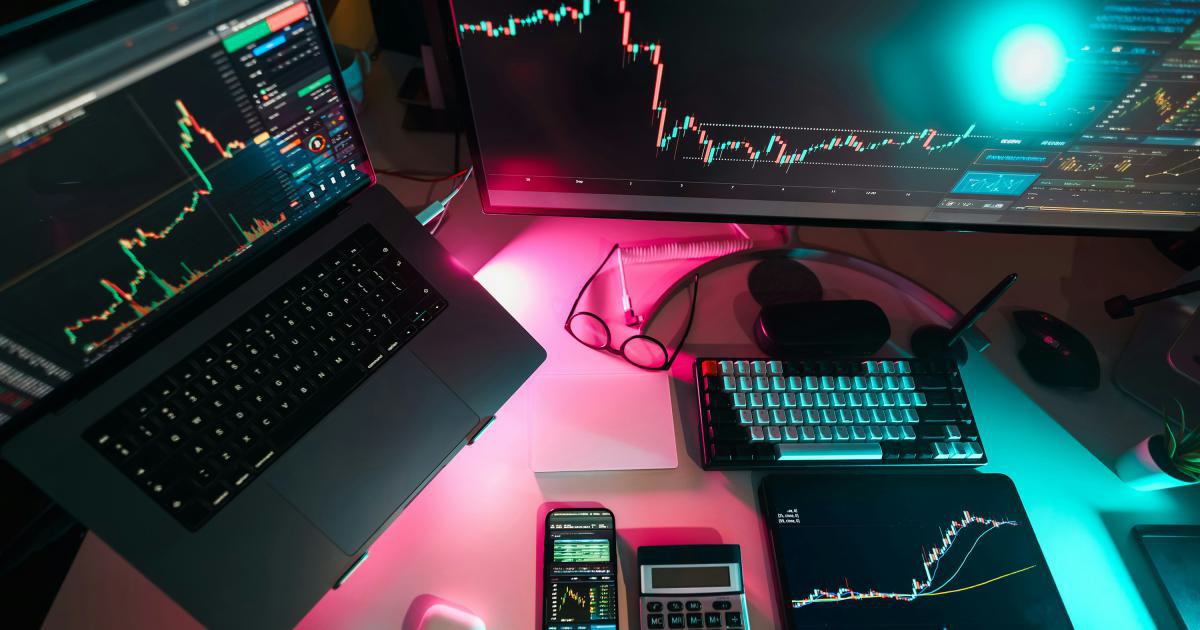Top 3 Mental Pitfalls Sabotaging Profitable Trading Habits: Adopt a Disciplined Trading Mindset System

Achieving success in trading goes far beyond understanding charts, patterns, and market fundamentals. It is fundamentally driven by the mind—a mindset where discipline plays a key role. In today’s dynamic markets, the disciplined trading mindset system has become essential for traders who wish to build sustainable, profitable habits. This comprehensive guide not only examines the three most disruptive mental pitfalls but also provides actionable solutions, real-world examples, and expert insights to help you recalibrate your trading psychology. Whether you are a beginner or a seasoned trader, mastering your internal battles can transform your performance and lead you toward more rational, informed decisions.
In this article, we will delve deep into the psychological traps that can sabotage even the best-laid trading plans: the paralyzing influence of fear and greed, the self-deception wrought by overconfidence and confirmation bias, and the impulsivity that erodes patience. Each section is designed to illuminate the root causes of these mental pitfalls while showing how a disciplined trading mindset system can help traders create a robust framework to counter these challenges. We will explore historical case studies where top traders have successfully overcome these issues, discuss the importance of maintaining emotional balance, and outline step-by-step strategies to build a resilient mindset in the high-stakes world of trading.
To begin, let us define what it means to harness a disciplined trading mindset system. At its core, this system is about adopting a rigorous, methodical approach to every trade. It involves setting well-defined entry and exit criteria, strictly managing risks, and consistently reviewing past decisions to learn and improve. This disciplined approach reduces the influence of unpredictable emotions and cognitive biases, allowing traders to maintain focus even in volatile market conditions. Now, let’s explore how specific mental pitfalls interfere with this process and what practical measures you can implement to overcome them.

Pitfall 1: Fear and Greed – The Dual Forces Undermining Rational Decisions
Fear and greed are perhaps the most universally acknowledged yet often underestimated emotions that plague traders. In trading, fear materializes as the anxiety of losing capital while greed manifests as the compulsive desire to accumulate wealth rapidly. Both emotions create a storm of impulsivity that can cloud judgment, leading to decisions driven by emotional extremes rather than calculated analysis.
The Psychological Impact of Fear and Greed
Fear can be paralyzing. Experienced during market downturns or when facing unexpected volatility, it often forces traders to exit positions prematurely or with disproportionate losses. This reaction is a natural psychological response intended to protect us from perceived threats. In trading, however, this instinct often backfires. The anticipation of loss can make traders exit winning positions too soon or avoid taking calculated risks that are necessary for growth.
On the flip side, greed can push traders into overtrading or making speculative moves without adequate research. The prospect of quick gains often triggers a state of overexcitement, which in turn leads to excessive risk-taking. Such unbridled enthusiasm can result in positions that are poorly hedged or in trading scenarios where the risks far outweigh the potential rewards. Overlooking objective analysis in favor of chasing unrealistic profits is one of the main reasons even experienced traders fall prey to greed.
Real-World Case Study: The 2008 Financial Crisis
During the 2008 financial crisis, many seasoned investors found themselves paralyzed by fear. Some liquidated their portfolios in panic, locking in significant losses rather than staying the course amid market fluctuations. Conversely, there were traders driven by greed who doubled down on risky positions in a misguided belief that the market would rebound immediately. Both groups suffered because their decisions were influenced more by emotional extremes than by data-driven insights. This period remains a key lesson on the importance of cultivating a disciplined trading mindset system.
Actionable Strategies to Combat Fear and Greed
Establish Pre-Defined Rules:
Implement Stop-Loss Orders:
Practice Mindfulness and Regular Reviews:
Adopt a Long-Term Perspective:
Embracing these strategies forms the backbone of a disciplined trading mindset system, ensuring that your emotions do not dictate your decisions. Understanding that fear and greed are natural responses but must be managed through systematic processes is the first step toward consistent profitability.

Pitfall 2: Overconfidence and Confirmation Bias – The Illusion of Certainty
In a market swayed by performance highs and low lows, overconfidence can be as dangerous as fear. When success breeds arrogance, traders may begin to overestimate their analytical skills, disregarding the inherent risks in the market. Coupled with confirmation bias—the tendency to seek evidence that supports one’s preconceptions—overconfidence can lead traders to ignore valuable warnings from market indicators or fail to diversify adequately.
How Overconfidence Develops in Trading
Success often leads to a heightened sense of self-assurance. Early wins or a series of profitable trades may cause traders to believe that they have unlocked the secret of the market. This belief might lead them to deviate from established strategies, omit careful risk assessment, or assume that they can predict market movements with unnatural accuracy. Overconfidence skews risk perception; traders start to think they are immune to the losses that can occur with every market cycle.
The Role of Confirmation Bias
Confirmation bias amplifies the harm caused by overconfidence by restricting one’s view to only that which supports existing beliefs. For example, if a trader is convinced that a particular stock is a sure winner, they may only pay attention to positive news or technical indicators confirming that belief. Meanwhile, negative signals are either underestimated or completely ignored, leading to an imbalanced view of market conditions. This selective gathering of evidence hinders objective decision-making, often resulting in missed red flags.
Real-World Example: The Dot-Com Bubble
During the late 1990s, rapid gains in the technology sector led to widespread overconfidence among investors. Many believed the market’s upward trajectory was unassailable. Confirmation bias played its part as investors largely focused on the success stories while disregarding underlying risks in overvalued companies. When the bubble burst, the fallout was significant; many learned the hard way that no one is immune to market corrections when emotions and biases take the reins.
Actionable Solutions to Overcome Overconfidence and Confirmation Bias
- Routine Self-Assessment:
- Diversification and Data Verification:
- Set Realistic Expectations:
- Use a Trading Journal:
By integrating these measures into your daily routine, you create an environment less susceptible to the pitfalls of overconfidence and confirmation bias. A disciplined trading mindset system emphasizes continuous learning and adjustment, ensuring that you maintain objectivity even in times of market exuberance.

Pitfall 3: Impulsivity and Lack of Patience – The Quick Fix Mirage
The allure of quick profits often leads traders into the trap of impulsivity. In an attempt to capture fleeting moments of opportunity, impulsive traders act without sufficient research, rigorous planning, or proper risk assessment. This hasty behavior can be particularly dangerous in fast-paced markets, where even a split-second misjudgment can cause significant losses.
The Consequences of Impulsive Trading
Impulsivity undermines the very foundation of a disciplined trading mindset system. Instead of following a carefully thought-out plan, impulsive decisions are often reactionary, driven by short-term market movements rather than an analysis rooted in long-term strategy. A lack of patience prevents traders from waiting for favorable market conditions or letting a well-planned strategy mature. This results in frequent, poorly timed trades that cumulatively erode profitability.
Identifying the Signs of Impulsive Behavior
Many traders might attribute a lapse into impulsivity to external market pressures. However, it often stems from internal psychological triggers such as stress, excitement, or even boredom. Recognizing these triggers is a key step in addressing impulsivity. Common indicators include:
- Rapid decision-making without thorough analysis.
- Frequent deviations from your pre-established trading plan.
- Overtrading in search of quick wins.
- Feeling regret or second-guessing immediately after a trade.
Professional traders often implement cool-down periods as a safeguard against impulsivity. Taking a short break after a significant trade, whether it results in profit or loss, allows the mind to reset before engaging with the next opportunity.
Actionable Strategies to Cultivate Patience and Control Impulsivity
Establish a Daily Routine:
Set Trigger-Based Checks:
Leverage Technology:
Develop a Long-Term Trading Plan:
Mindfulness and Stress Management:
Real-World Perspective: Small-Scale Failures and Big Lessons
A common scenario among novice traders is the “quick fix” mentality. Many have tried to recoup losses through a series of impulsive trades, only to deepen their financial setbacks. Conversely, disciplined traders who patiently wait for ideal market setups often navigate periods of high volatility better and recover losses more sustainably. Their success underscores the importance of patience and controlled decision-making—cornerstones of the disciplined trading mindset system.
As you work on taming impulsivity, remember that every rushed decision chips away at the opportunity to build a stable, profitable trading career. Trust your analytical framework and allow disciplined patience to guide you through the ups and downs of the market.

Conclusion: Building a Resilient, Disciplined Trading Mindset
Trading is as much about mental strategy as it is about financial acumen. By recognizing and addressing the mental pitfalls of fear and greed, overconfidence and confirmation bias, as well as impulsivity and a lack of patience, you can pave the way to a more methodical and successful trading career. Adopting a disciplined trading mindset system is not an overnight transformation but a continuous journey of self-improvement, reflective practice, and strategic planning.
Recap of Key Actionable Steps
- Define and adhere to a structured trading plan that includes specific entry and exit criteria.
- Use automated tools and thorough self-assessment methods to curb emotions during volatile market moments.
- Engage in regular mindfulness and stress management techniques to reset your mental state.
- Constantly review your trading journal to identify and learn from emotional missteps.
Ultimately, the pursuit of a disciplined trading mindset system demands both a clear strategy and emotional resilience. Each mental pitfall, when acknowledged and methodically addressed, can transform from a stumbling block into a stepping stone toward improved performance. The journey is challenging, but the rewards of a stable, profitable trading habit are well worth the effort.
As markets continue to evolve, so too must your techniques for managing the inner battles of trading. Equip yourself with knowledge, trust in your systematic approach, and remain committed to your disciplined principles. That way, you not only survive the volatile landscape of trading but also seize opportunities with clarity and confidence.
Invest in your mental fortitude as diligently as you manage your portfolio. Over time, the disciplined trading mindset system will become second nature, enabling you to navigate uncertainty, manage risks, and ultimately achieve the profitable trading habits you aspire to maintain.
Embrace the challenges of trading psychology and transform your approach from reactive to proactive. By setting robust rules, developing self-awareness, and continuously refining your strategies, you build a resilient foundation that turns every market cycle into a learning opportunity and every trade into a step toward long-term success.
Remember, the success of your trading career hinges on your ability to control emotional impulses and maintain discipline. With patience, regular introspection, and disciplined practices, you can overcome these mental pitfalls and thrive amidst even the most challenging market conditions.
Happy trading, and may your disciplined approach pave the way to lasting profitability!
Unlock Your Trading Potential with Edgewonk
Struggling to consistently achieve profitable trades? Edgewonk's cutting-edge analytics empower you to analyze your performance and refine your strategies.
Our advanced trading journal software provides detailed insights, psychological analysis, and personalized recommendations tailored to your unique trading style.
Isla Wyndham
52 posts written




